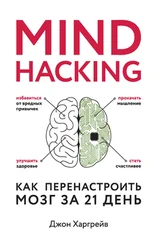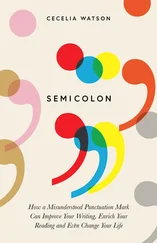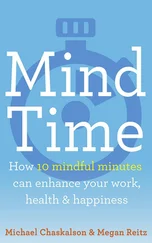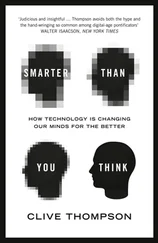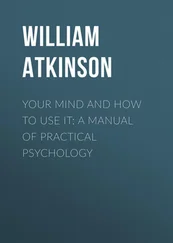Mel was morally opposed to this change. His code was statistically perfect, an elegant representation of real-world blackjack odds. How dare they ask him to insert an error into his perfect simulation! After getting some heat from above, Mel reluctantly complied. When he tested the “cheat switch,” however, he found the computer cheated in the opposite direction, so the computer always won . He was delighted with this hack, of course, and eventually left the company without fixing it.
Enter the author of the story, a programmer named Ed Nather, who was brought into Royal McBee and asked to fix Mel’s code. As he began digging into the masterpiece that Mel had left behind, he was astounded by the elegance and genius of Mel’s code.
I have often felt that programming is an art form,
whose real value can only be appreciated
by another versed in the same arcane art;
there are lovely gems and brilliant coups
hidden from human view and admiration, sometimes forever,
by the very nature of the process.
You can learn a lot about an individual
just by reading through his code,
even in hexadecimal.
Mel was, I think, an unsung genius. 4
Mel refused the help of any compilers or assemblers; he wrote in straight hex code, which looks like this:
> 79 6f 75 20 61 72 65 20 6e 6f 74 20 79 6f 75 72 20 6d 69 6e 64
The author writes reverently of Mel’s machine-level hacks, such as “writing the innermost parts of his program loops first, so they would get first choice of the optimum address locations on the drum”—in other words, optimizing his code at the lowest possible level so that his programs would run with maximum efficiency on the LGP-30. Mel and the computer were one.
In the end, the author is so awestruck by Mel’s coding mastery that he feels he cannot make any changes; it would be like touching up the Mona Lisa ’s smile. He tells his boss he can’t figure it out and writes this homage to Mel instead, in which Mel becomes the archetype of the “Real Programmer,” the one to whom all other programmers aspire.
When we choose our positive thought loops, we are looking for that same sense of efficiency and optimization. When you think of the five goals you wrote in the previous chapter, what is the thought loop that will get you there? Choose your thought loops carefully, for they will determine the future direction of your life.
Constructing New Loops
The key to constructing positive thought loops is looking for alternative or balanced thoughts to replace the negative things that you’ve been telling yourself for years. Instead of automatically repeating the negative thoughts when certain situations arise, you want your mind to automatically repeat these positive thoughts instead. And as with Mel, you want to strive for precision and elegance in the wording of these loops.
For example, Jim’s boss gives the team their monthly sales goals on the first of each month. Jim always has a nagging feeling of doom in the week leading up to it: I’m not good enough, I won’t meet my goals, I’ll fail and be fired . Instead, Jim could construct a positive thought loop like:
> I’m good at my job.
Or even better:
> I’m the top salesperson in my office.
Or better still:
> I’m brilliant at helping my company and our customers succeed.
Note with this last loop, he is enlarging his boundaries of what is possible, not just focusing on keeping his job by a thread, but actively adding value to the world.
Take Robbie, who is still feeling guilty over the fact that she argued with her father a week before he died. Whenever someone mentions death, or sometimes when she’s just sitting at her desk, her mind flashes back to that moment and she thinks, I’m a horrible daughter . Her new positive loop could read:
> I’m a good daughter.
Or even better:
> I’m a good person.
Or better still:
> I’m at peace with myself, and getting better every day.
Note that the example of Jim is triggered by an external event, and the example of Robbie is triggered by an internal event. The negative thought loop that gets kicked off in each of them is similar: a feeling of not being good enough . As they become aware of these thought loops through the concentration games and identification techniques in the previous section, they are now armed with a powerful tool: an alternative thought .
Let’s take a final example, which is very close to my heart (and lungs): getting free of alcohol and drugs. In the first few weeks of sobriety, there was only one thought going through my head: I will never have fun again . I was sure that lifelong sobriety was a ticket to boredom and unhappiness: no more drunken cow-tipping in Vermont, no more riding kiddie coasters while high as a hang glider. I suppose I could have thought:
> Sobriety is fun.
That felt like an outright lie. I could have thought:
> I’m happy to be sober.
I’m glad I settled on this positive loop:
> I’m grateful for my sobriety.
There is a great deal of research on the transformative power of thankfulness. In a series of studies by psychologists Robert A. Emmons and Michael E. McCullough, 5three groups of people were given a different writing assignment for several weeks. One group listed five things for which they were grateful, one group listed five things that annoyed them, and a control group listed five things that had taken place during the week.
The results were dramatic: those in the “gratitude” group felt better about their lives, were physically healthier, slept better, spent more time exercising, were more likely to offer support to others, and were more optimistic about the future. A follow-up survey sent to the spouses and partners of participants confirmed that they noticed a positive difference as well.
The researchers struggled to define thankfulness, but the definition I like best is “savoring the positive circumstances of life.” There are many positive circumstances in your life, whether that’s your health, your friends, your intellectual capacity, your job, or just the fact that you’re reading this book. On a daily basis, you can find something to appreciate, whether it’s a good meal, a fine sunset, or a hearty laugh.
Feeding this gratefulness into your positive loops can have a powerful, life-altering impact, as it did for me. By repeating I’m grateful for my sobriety , day in and day out, I have found that I genuinely am grateful for my sobriety. I’ve gone from seeing it as a curse to a blessing—in fact, my sobriety is now like a precious treasure.
Choosing Your Loops
In the Academy Award–winning movie Inception , Leonardo DiCaprio leads a different kind of mind hacking team. Inception is a mind-bending science-fiction heist movie about a team that hacks not into bank vaults but into people’s minds as they sleep. Using a secret military technology, DiCaprio’s team is able to enter a “shared dream” with their target without that person’s knowledge, even implanting an idea into the person’s subconscious, a technique called “inception.”
As the movie progresses, we learn the backstory: DiCaprio and his wife once entered a shared dream, where they spent fifty years together in this alternate world, building massive cityscapes and seemingly growing old together. His wife began to fall in love with the dream reality, never wishing to return to “real life.” Unable to convince her, DiCaprio secretly placed an idea into her subconscious: This is not real .
Читать дальше
![Джон Харгрейв Mind Hacking [How to Change Your Mind for Good in 21 Days] обложка книги](/books/404192/dzhon-hargrejv-mind-hacking-how-to-change-your-min-cover.webp)


